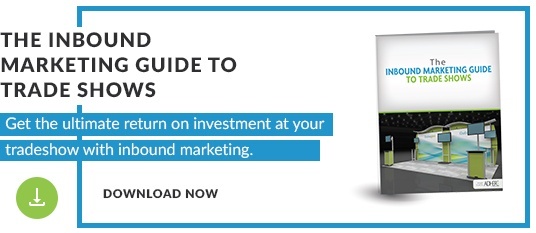 Adam Marquardt
Adam Marquardt
Updated March 2020
There are many misconceptions when it comes to brand development. It is often unfairly painted as a drawn-out, complicated, and expensive process. Some believe it should only happen in the formative years of a business. The truth is, neither of these beliefs are altogether accurate.
While brand development should be an integral part of your company’s beginning, it can be as involved as you’d like, and you can revisit the process whenever you feel the need.
Your brand development initiative need not be a grand undertaking nor an expensive one to make an impact. What makes your business unique, who you’re intending to serve, your value proposition, and your story are all essential parts of developing your brand.
Understanding the basic principles of brand development can give you a better position to evaluate your brand and your marketing plans. Let’s take a look at three key elements to an effective brand development strategy: who you are, who your buyers are, and what your company brings to the table.
1. Who you are
This seems like it would be an easy thing to define, but for some companies, this is a hurdle they don’t even want to think about. Companies evolve over time, and who your company is today may not be who it was at its inception or who it may be in the near future.
Companies evolve to improve efficiency, to increase their relevance with their target market, or to zero in on a totally new type of customer. These are all types of growth, and each speaks to a measure of success. While it’s essential for the longevity of a company for this evolution to take place, it is equally as critical that the brand reflects these changes.
That being said, the first step in developing a brand is to clearly define what it stands for and what value it offers. After all, how can you communicate the value of your brand if you don’t have a solid understanding to base it on?
Discovering Your Story
If you don’t know who you are, you won’t be able to effectively market yourself to others. Who you are as a brand can encompass many things: your goals, your mission, your values, and your product or service offerings, to name a few. All of these things are influenced by your company’s story, which is closely linked to your brand’s purpose.
Who you are will be evident in what your brand represents at its core, as it’s made clear through your brand’s purpose. This is the foundation for everything else, and it will likely be reflected in everything you do. As an example, let’s take a look at IKEA. They sell furniture—it’s what they do—but their purpose is to “create a better everyday life.” This is made apparent not just in the products they make, but also through their advertisements and packaging, their store layout, and the things they do for the community—in other words, who they are is essential to their branding.
It’s hard to be successful if you don’t have a solid reason for why you’re doing what you’re doing. So dig deep to discover your story. If you’re not sure, you can start by asking the following questions:
- Why did you start your business? Was there a gap in the market that needed to be filled?
- How will your company affect this change?
- Why should your audience trust in your brand?
- How does your purpose motivate you?
Once you answer these questions and define your purpose, you can start asking the important questions, such as: Will your story enable you to connect with your ideal clients?
2. Who your buyer personas are
Your “buyer personas” are the fictional representation of your ideal clients. The worst misstep you can take is to fail to identify who your ideal clients are and what makes them tick. We’re not talking about simply identifying them by demographic information. We mean getting to know them inside and out—the challenges they face that prompt them to look for the services or solutions you offer, their decision-making process, the factors they look at upon vetting, etc.
When developing your brand, you should consider your various buyer personas. Each persona may be attracted to your brand for different reasons, may be vetting at different stages, and may be seeking different benefits from your offering.
Knowing important details from each buyer persona will help you create a brand that attracts more of your ideal clients. Some of the elements that will speak for your brand are design and copy. With inside knowledge of your audience, you’ll be able to develop a look, feel, and voice that speaks directly to them. You’ll have the insight to craft distinct messages that address each persona’s needs, and doing so will enable you to showcase the relevant valuable aspects of your offering to different personas.
Later on, you can use this information to develop a style guide for your brand to make sure everyone is on the same page and to deliver consistency in your branding.
How to discover the right people
It’s not enough to find just any customers. To effectively market and sell your products or services, you must reach the right people. Digital marketing is making it increasingly easier to segment your marketing so you can reach your various target audiences. The work you’ll need to do in the beginning is discover who these people are.
How do you go about finding the right people? It begins with evaluating your current customers and gathering information about them, taking their answers to analyze their behavior and categorize them into distinct personas. Reach out to previous and current clients and ask them to participate in an interview. You will want to ask them questions about their:
- Personal characteristics
Start with the essentials: what are their demographics, their background, and their career path? - Company
Now you need to know how they fit into their workplace. What industry do they work in? Can they offer details about the company such as revenue and number of employees? - Role
Gather information about their job role, title, decision makers, how their job is measured, and what a typical day looks like. You’ll also want to gauge their skills and the knowledge and tools they use daily. - Challenges
In order to best help your buyers, you need to understand their issues and frustrations. What are the pain points that caused them to seek a new solution? - Goals
What does success look like to them? What is their role in ensuring the company’s success? - Learning styles
Discovering how buyers get their information and interact with their community will give you valuable insight into their research process. Ask about learning styles as well as associations or conferences that they attend. - Purchasing behavior
What was the purchase experience like for the buyer? Did it align with their expectations? Ask them to take you through the process with them. Learn whether they would purchase from you again.
Dig deeper into discovering your buyer personas with our useful guide.
3. What you bring to the table
Finally, when developing your brand, you must be able to answer this important question: “Why should your target market care about you?” Take a look at your different buyer personas and analyze what’s in it for them.
What motivates these people to buy from you? Write down every purchase motivator you can think of for each persona. These motivators should be at the core of every message you will be crafting for each group of potential customers. Some motivators are more powerful than others. Finding the most powerful motivators to focus on is paramount to your brand’s success.
To pinpoint these motivators down, get in touch with previous and current clients that fit your buyer persona profiles and ask them to participate in an interview. In this interview, get to the bottom of the “why”. Use this information to fine tune the messaging, strategies, and elements of your brand. It’s important to personalize the experience for your customers. Authenticity will help you connect with them. Show who you are, and the right customers will notice.

